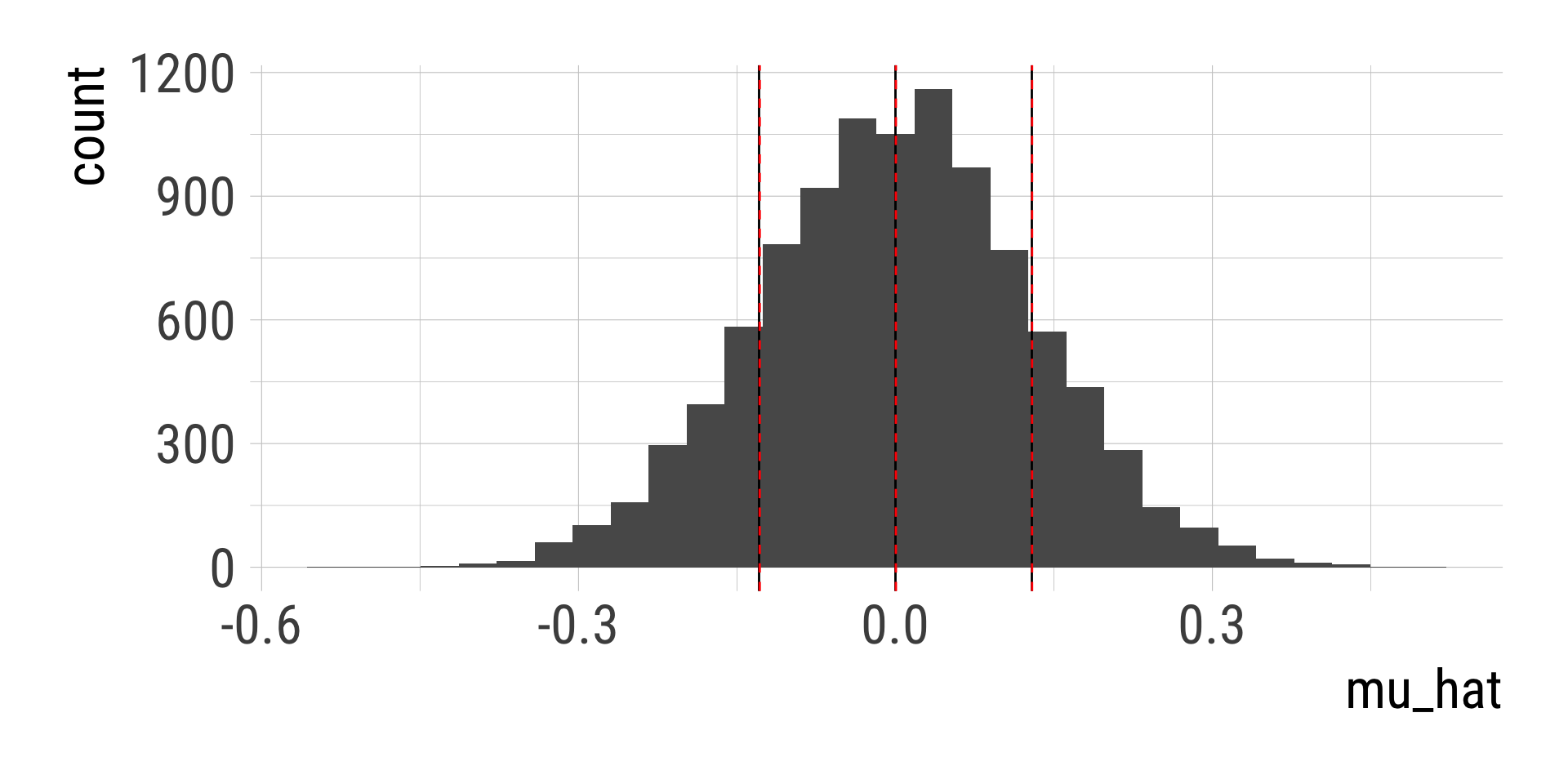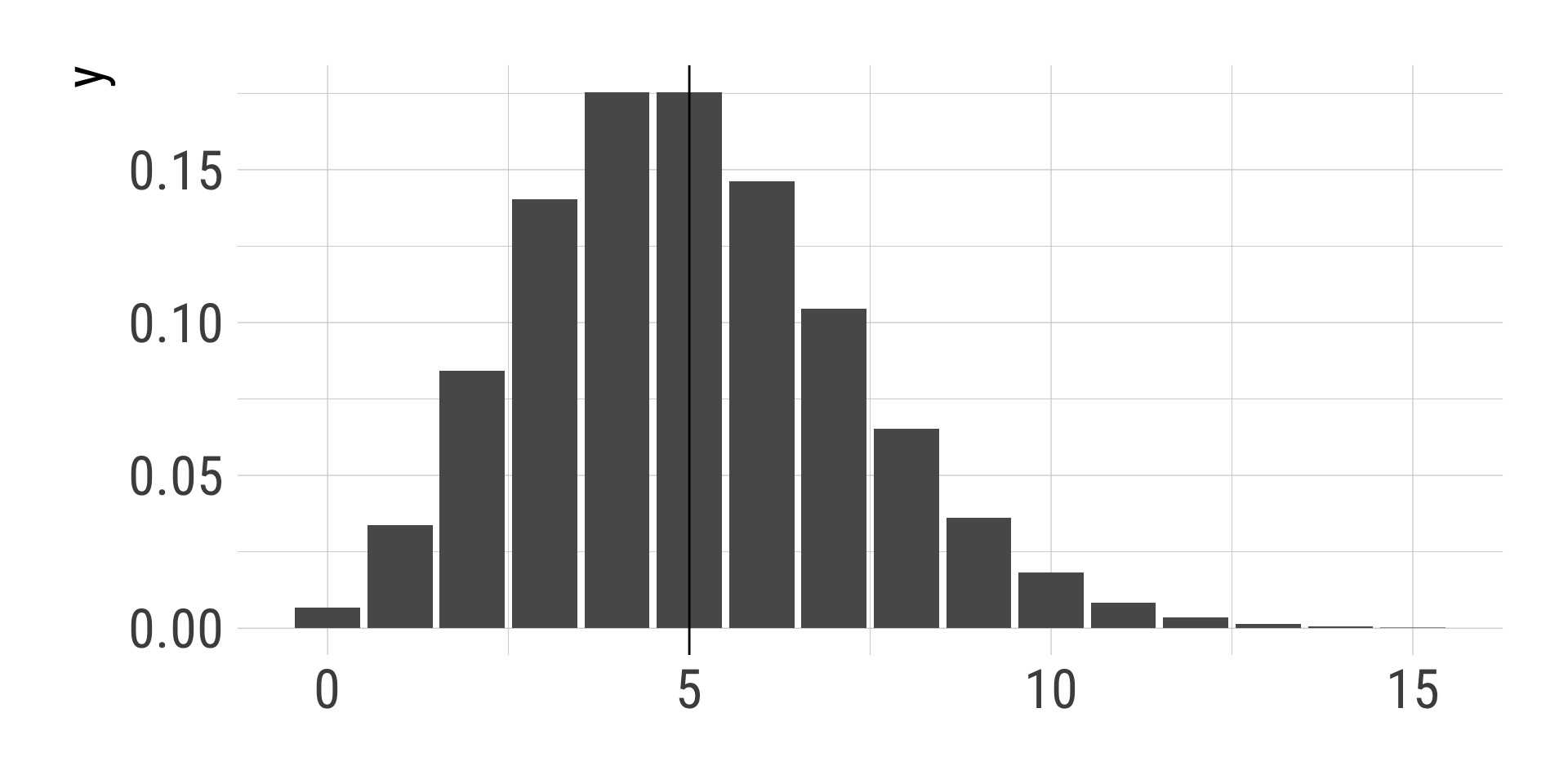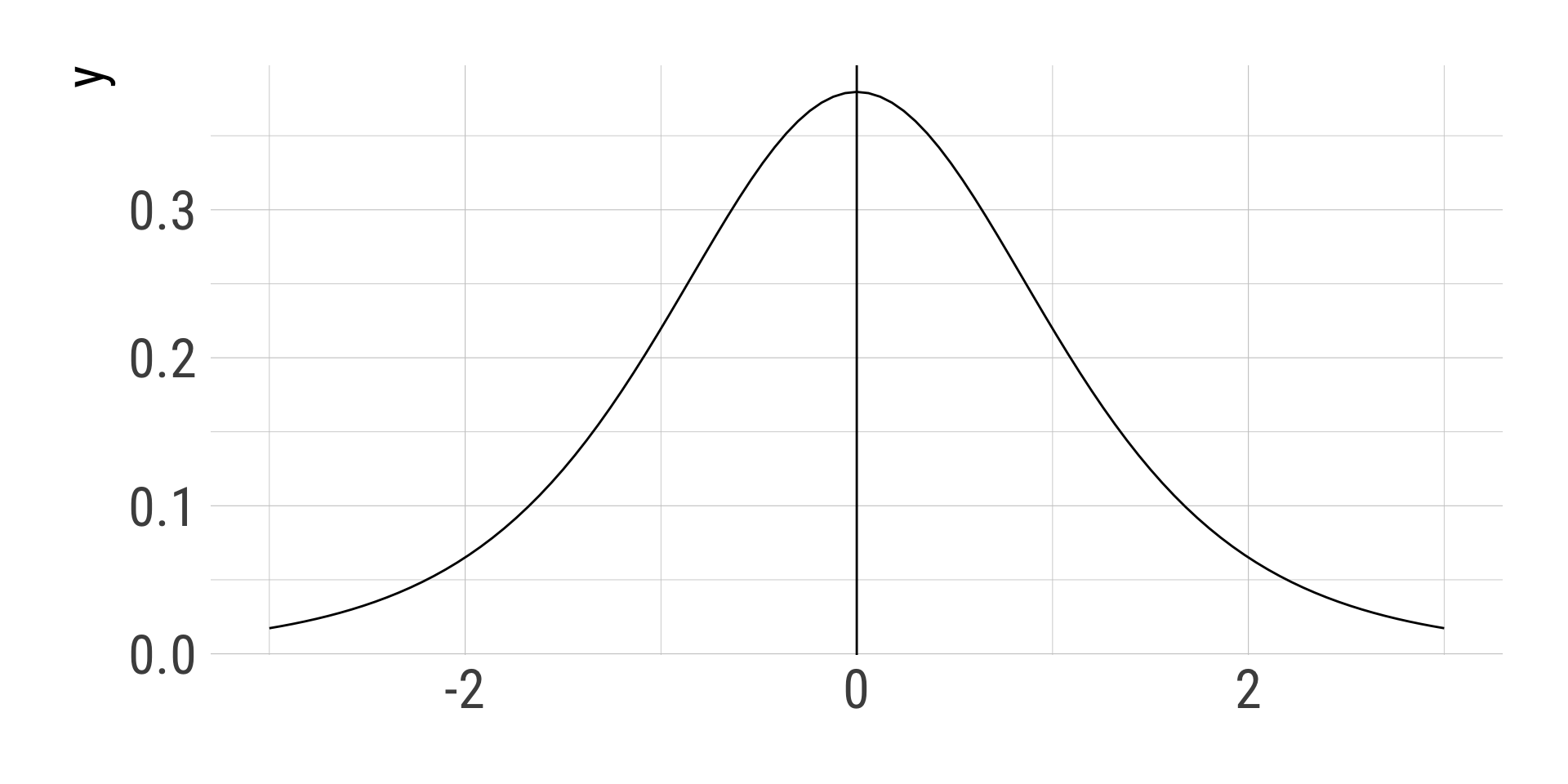# new function
sim_CLT_pois = function(n, lambda) {
sims = rpois(n = n, lambda = lambda)
mean(sims)
}
i = 10000
many_means = map_dbl(1:i, .f = ~ sim_CLT_pois(n = n, lambda = lambda))Solution Exercise 1
Data Simulation with Monte Carlo Methods
Marko Bachl
University of Hohenheim
Group exercise 1
Exercise 1a. Proving the CLT for a Poisson distribution
Adapt the code from the examples to check whether the CLT also holds for a Poisson distribution.
Random numbers are sampled with
rpois(n, lambda), wherenis the sample size andlambdais the mean (and also the variance) of the distribution.The population standard deviation is \(\sqrt{\lambda}\).
Solution 1a: Proving the CLT for a Poisson distribution
Solution 1a: Proving the CLT for a Poisson distribution
Solution 1a: Proving the CLT for a Poisson distribution
Solution 1a: Proving the CLT for a Poisson distribution
Show the code
d_many_means = tibble(sim = 1:i, mu_hat = many_means)
d_many_means %>%
ggplot(aes(mu_hat)) + geom_histogram() +
geom_vline(xintercept = c(mu - sigma / sqrt(n), mu, mu + sigma / sqrt(n))) +
geom_vline(xintercept = c(mean(many_means)-sd(many_means),
mean(many_means),
mean(many_means)+sd(many_means)),
color = "red", linetype = 2)
d_many_means %>%
ggplot(aes(sample = many_means)) +
geom_qq(distribution = qnorm,
dparams = c(mean = mu, sd = sigma / sqrt(n)),
geom = "line") +
geom_abline(slope = 1)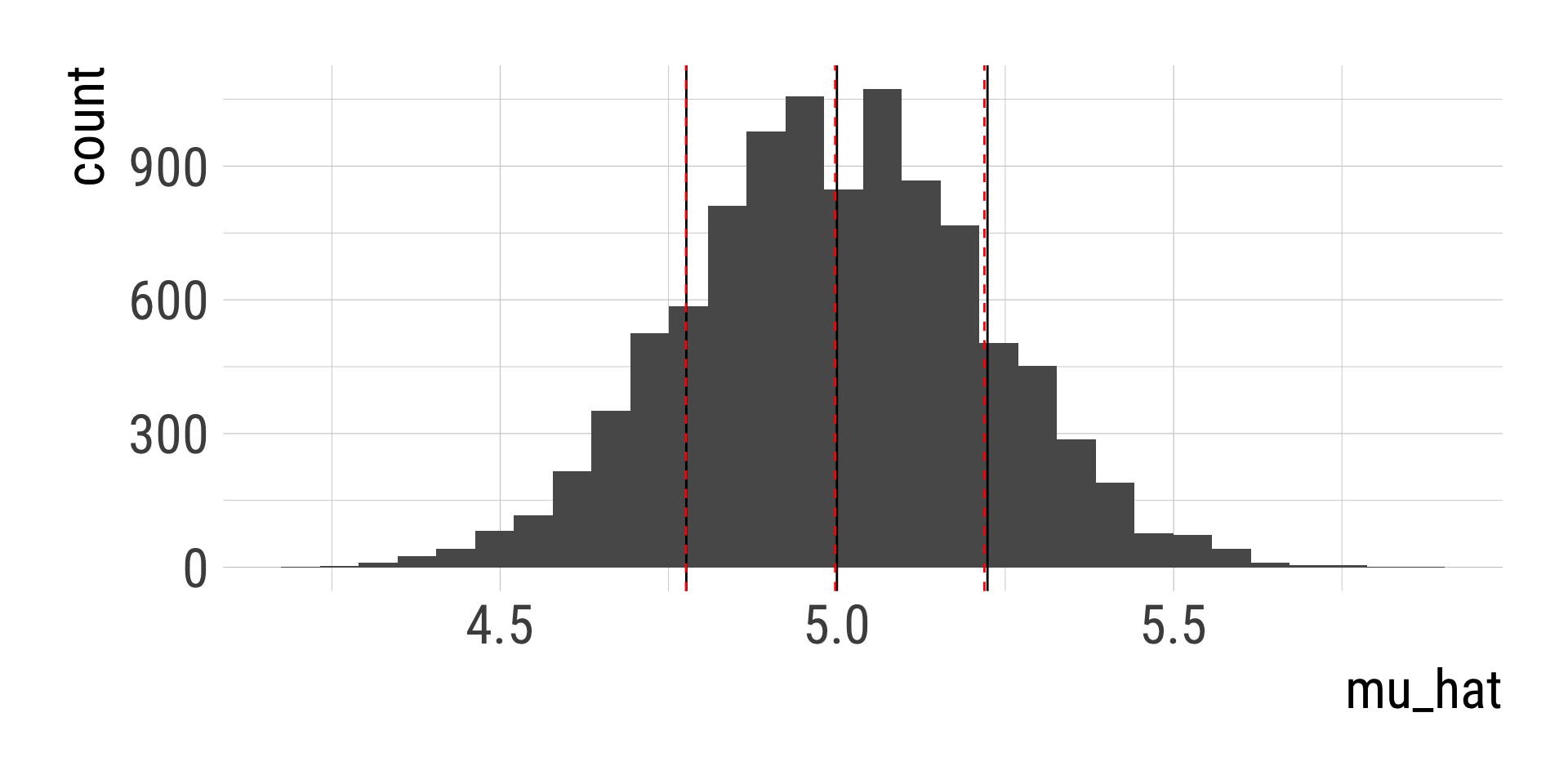
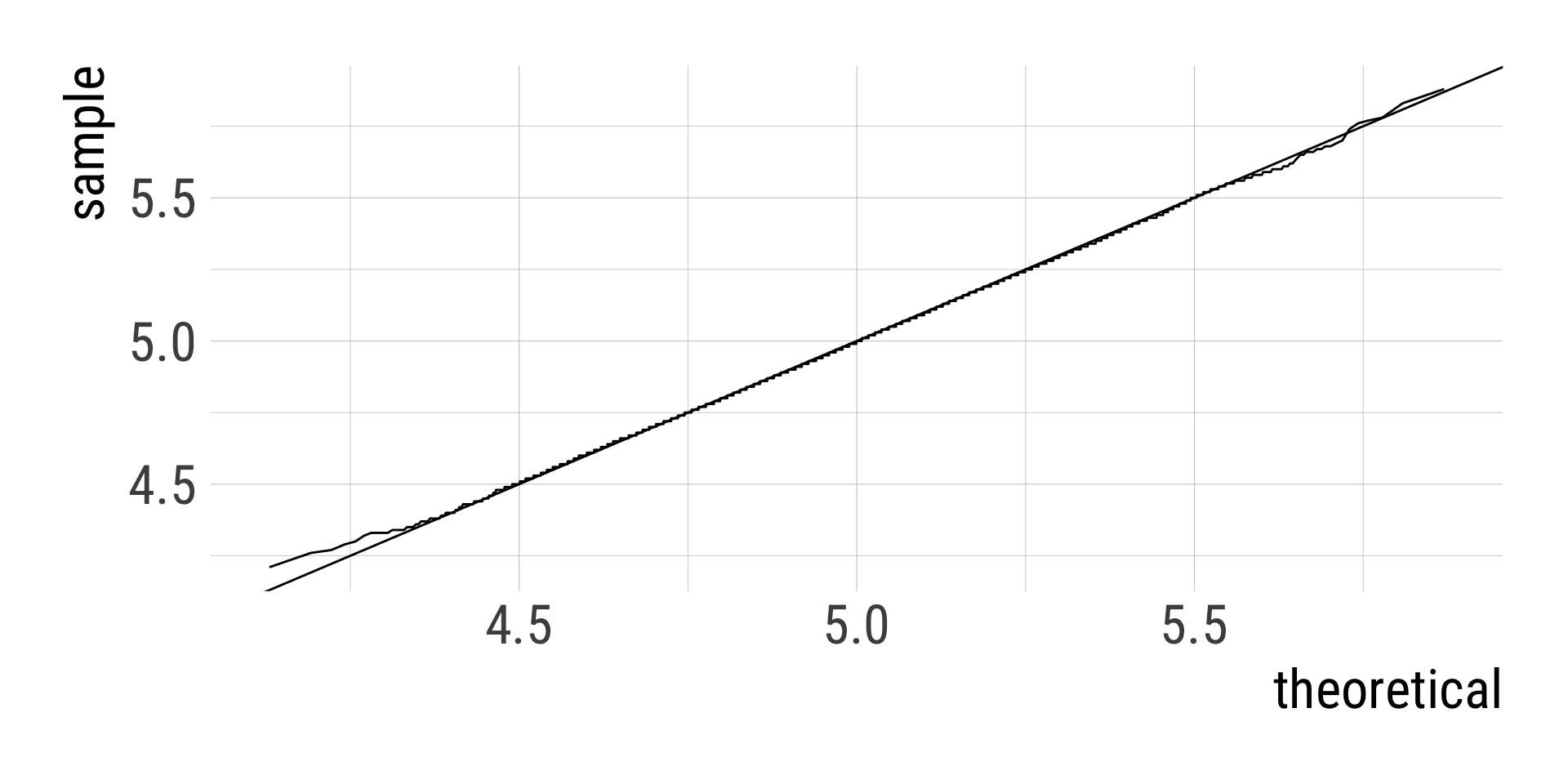
Exercise 1b. Proving the CLT for any other suitable distribution
Select another suitable distribution from
?DistributionsRead the documentation to understand which arguments must be provided.
Find the definition of the population distribution’s standard deviation to calculate the analytical standard deviation of the sampling distribution.
Adapt the simulation and analysis code accordingly.
One possible solution for 1b. Proving the CLT for a Student T distribution
Solution 1b. Proving the CLT for a Student T distribution
Solution 1b. Proving the CLT for a Student T distribution
Solution 1b. Proving the CLT for a Student T distribution
Show the code
d_many_means = tibble(sim = 1:i, mu_hat = many_means)
d_many_means %>%
ggplot(aes(mu_hat)) + geom_histogram() +
geom_vline(xintercept = c(mu - sigma / sqrt(n), mu, mu + sigma / sqrt(n))) +
geom_vline(xintercept = c(mean(many_means)-sd(many_means),
mean(many_means),
mean(many_means)+sd(many_means)),
color = "red", linetype = 2)
d_many_means %>%
ggplot(aes(sample = many_means)) +
geom_qq(distribution = qnorm,
dparams = c(mean = mu, sd = sigma / sqrt(n)),
geom = "line") +
geom_abline(slope = 1)